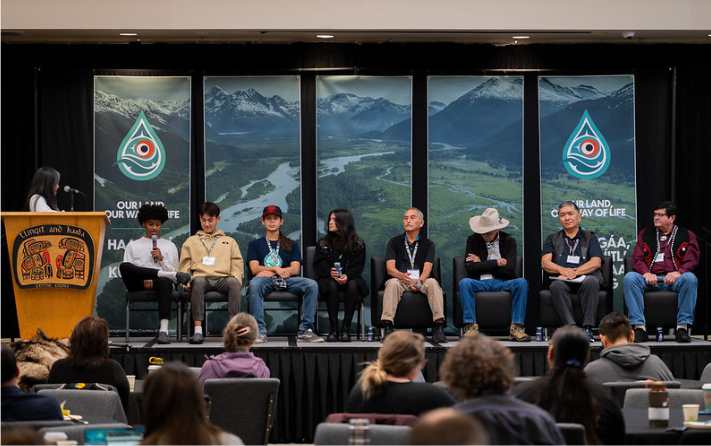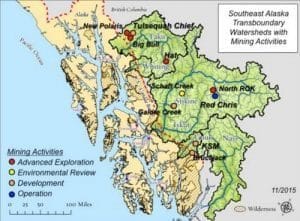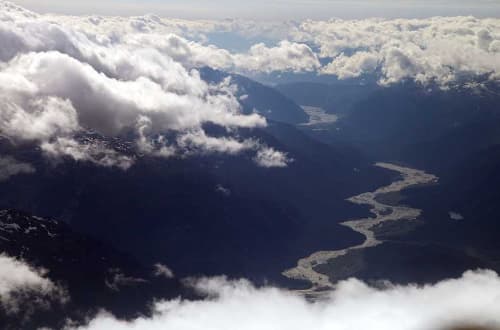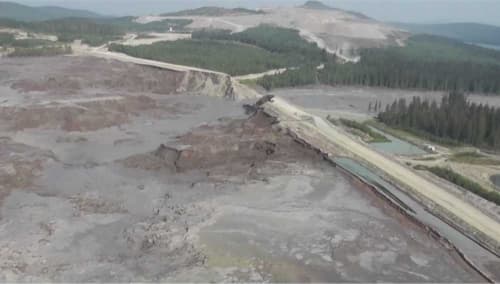SEITC challenges Canada’s failure to prevent human rights violations arising from mining development in the headwaters of the culturally critical Stikine, Taku and Unuk Rivers

[Juneau, AK] In joint letter addressed to British Columbia (B.C.) Premier, Alaska state legislators and representatives urge B.C. to consult with Southeast Alaska Indigenous Transboundary Commission (SEITC) and its member Tribes during the province’s processes for permitting new mines: “The U.S. and Canadian governments and the Indigenous peoples on both sides of the border have a responsibility and opportunity to better manage these shared watersheds in a constructive and cooperative manner. We hope the B.C. government shares our conviction that this can only be accomplished with the Alaska Tribes of the SEITC as meaningful participants.”
Implementation of the United Nations Declaration on the Rights of Indigenous Peoples (DRIPA), ratified by Canada in June of 2021, requires Canada to recognize the rights of the Southeast Tribes and their interests in territories that pre-date the border between the U.S. and Canada. Representative Sara Hannan said the letter is a reminder for the Premier that Alaska Tribes and their interests precede the Canada-United States border, and SEITC should have a seat at the table in development decisions in these watersheds.
SEITC has challenged Canada’s failure to prevent human rights violations before the Inter-American Commission on Human Rights. While waiting on Canada’s response, SEITC is building a strong case for Participating Indigenous Nation status for its member Tribes and is in direct engagement with B.C. “We have a clear path forward and our talks are beginning to get productive.”, says SEITC Vice President and Tlingit and Haida’s Executive Council 2nd Vice President, Rob Sanderson, Jr.
The B.C. mines are likely to release pollution that would seriously harm the health and viability of the salmon that spawn and rear in the Taku, Stikine, and Unuk River watersheds. Salmon is essential for the livelihoods and cultures of local Indigenous peoples. Failing to prevent harm to these rivers constitutes a violation of the rights of the sovereign Tribal governments, their culture and means of subsistence.
“Salmon unites Tribes and First Nations on both sides of the border. As salmon people, it is our responsibility to preserve salmon for future generations, as our ancestors did for us.”, said SEITC Treasurer and tribal leader, Trixie Bennett.
The mine projects include the Galore Creek, Eskay Creek and the world’s largest gold project by resource size, the Kerr-Sulphuretts-Mitchell (KSM). The Red Chris mine began operations in 2015. The 344 feet high tailings dam – holding in place 107 billion cubic feet of mining waste – utilizes the same flawed design as the dam that caused the Mount Polley mine disaster in 2014. Currently dozens of large-scale mining projects exist in watersheds shared across the border.
Recent statements from First Nations, Tribes, Alaska lawmakers and representatives are amplified by new letter from United Nations Special Rapporteur on the rights of Indigenous peoples, who calls on the Government of Canada to uphold an important principle of international law: “Indigenous Peoples around the world are suffering negative, sometimes devastating consequences from Canadian extractive industries, mainly mining operations.”
Established in 2014, SEITC is a consortium of 15 Tsimshian, Tlingit and Haida Nations upholding their sovereign rights to steward traditional lands, waterways, and sacred sites.
[content id=”79272″]








